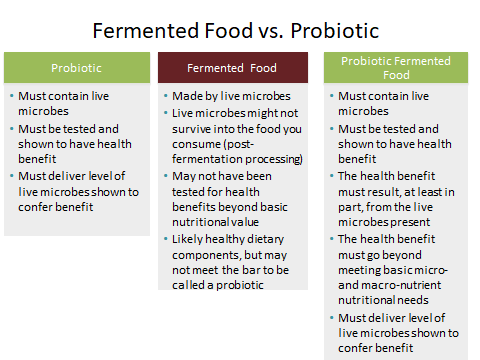How MCT Oil Can Help You Lose Weight and More
MCT oil or medium chain triglycerides (MCT’s) are unique fatty acids that are found naturally in coconut and palm oils. They have a remarkable ability to stabilize blood sugar and enhance ketone body production. This process makes MCT’s a powerful tool to reduce inflammation, improve metabolism and enhance cognitive function.
The term “medium” is in reference to the length of the chain of fatty acids. Oils can have short, medium or long chains. Most oils are a combination of short, medium and long chain fatty acids. MCTs are the easiest type of fatty acid that your body can burn for calories. They get absorbed directly from the gut to the liver and then are used for energy instead of being stored as fat.
Research confirms that MCTs can make you lean and healthy. In one study, researchers compared the results of MCTs with long-chain triglycerides on body fat, energy expenditure, appetite, and other aspects of weight loss in overweight men. They put these men on different diets for 28 days. One group ate a coconut-oil-rich diet high in MCTs such as caprylic acid and lauric acid. The other group ate a diet rich in long-chain triglycerides like olive oil. They then switched the diets so that they could see differences in the same subjects.
The researchers found the coconut group lost more body fat, which they attributed to a greater increase in energy expenditure and burning fat. Coconut oil actually sped up their metabolisms, allowing them to lose more belly fat and curbing their appetite compared with the men on the olive-oil-rich diet.
In fact, studies suggest that MCTs can help men burn about 460 extra calories a day and women about 190 extra calories (I know, women it’s just not fair!). MCTs also affect your hormones, including appetite-controlling hormones, helping you feel full.
MCTs are brain food:
Ketones are unique energy producing molecules made from fatty acids. Our bodies can make them from stored fat or from MCTs. Ketones feed all the cells of the body, but in particular they are a preferred fuel for the brain.
Research has demonstrated that MCTs can readily cross the blood-brain barrier (BBB) and be oxidized by the brain. Thus, MCTs may provide both a direct and an indirect brain fuel source via the generation of ketones. More information on brain health is in this podcast and includes steps to follow to help with ADD, poor memory, lack of motivation, depression, dementia and more. It includes:
Detoxifying the body of pesticides, and heavy metals
Taking in probiotic foods to keep the gut balanced
Eating more essential fatty acids than just coconut oil which are vital for the brain, like avocado, flaxseed, hemp seed, oily fish, pumpkin seeds, and walnuts
Reducing inflammation through the diet - Listen to our podcast on Chronic Inflammation
Making quality sleep a priority
Reducing psychological and emotional stress through exercise, meditation, journaling
You can also get a pure MCT oil that is concentrated caprylic and capric acid. An MCT oil is processed in a manufacturing plant to remove all the longer chain fats and other compounds except these two fatty acids. But be careful with the brand of MCT oil you purchase as it is important to get one that is tested for purity and heavy metals. This is the MCT oil I use.
MCTs raise up ketones and lower blood sugar naturally. They have a strong blood sugar stabilizing effect that helps to reduce inflammation.
You might be hesitant to use coconut oil or MCT oil because it's high in saturated fat, which has unfairly been demonized for decades. There is a world of difference between quality saturated fat in coconut or MCT oils and what you might get in a fast-food meal.
You can get MCTs from whole foods: here’s a list of MCTs in foods, as a percentage of total fats (source):
Coconut oil: 15%
Palm kernel oil: 7.9%
Cheese (if you tolerate dairy): 7.3%
Butter: 6.8%
Milk: 6.9%
Yogurt: 6.6%
But you can also get MCTs from specially concentrated MCT oil, which is much more concentrated (it’s almost entirely MCTs). A tablespoon of coconut oil will give you 2 grams of MCTs while MCT oil will give you 15 grams of MCTs.
Most people tolerate MCT oil very well, however, too large of dosages too quickly can cause gastrointestinal problems such as nausea, diarrhea and vomiting. If you have this problem, don’t panic and give up on MCT oil right away. You can easily reduce or eliminate these symptoms by starting with very small doses at a time. This would mean ½ tsp several times daily and slowly increasing the dosage as tolerated.
Adding MCT oil can substitute for some of the oil in your diet but should not be used to replace all the fat in your diet. Begin using MCT 1 tablespoon per day and slowly increase over several days. Too much MCT may result in diarrhea or a stomach ache. 1-3 tablespoons per day is recommended.
How To Use MCT Oil:
MCT oil is very versatile and can be used as a salad dressing, in smoothies, for cooking or just straight up off the teaspoon. Here are the most popular ways to use MCT oil:
Cooking Oil: Highly stable under heat like coconut oil but no coconut flavor
Salad Dressing: No major flavor so combine it with herbs and vinegar
In Coffee & Tea: Great for thickening up coffee or tea and improving their health benefits. Here’s a recipe for Bullet Proof Coffee.
Smoothies: Add 2 tbsps of MCT oil in a smoothie to curb hunger and have the smoothie keep you satisfied longer.




